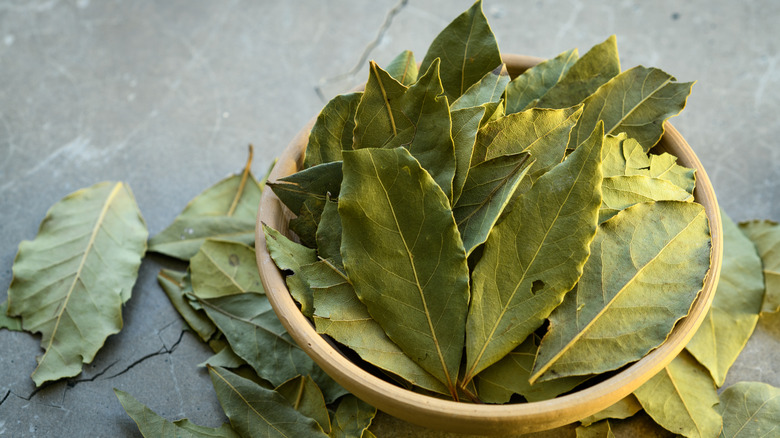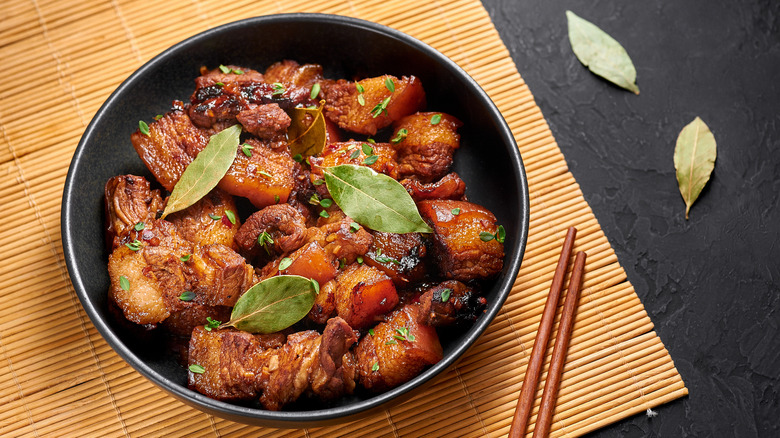What Happens If You Accidentally Eat Bay Leaves?
Our enjoyment of food comes from how it engages all of our senses. That's why recipes often feature ingredients that enhance a dish's flavor but aren't intended to be actually ingested. One example of this is the bay leaf, an herb used in soups, stews, sauces, and even desserts like this fig upside-down cake with bay leaf caramel. There are two types of bay leaves found in most U.S. markets: the Turkish and the California varieties.
Turkish bay leaves typically have wavy edges and a shorter, more rounded shape. Their minty yet warm, peppery, and slightly bitter flavor is also not as strong as the California variant's. The brittle, olive-colored leaves that you find more often in the grocery's spices section are the dried Turkish variety since their subtler qualities are easier to work with in the kitchen, especially if you are a casual home cook. Simply steep these leaves in liquid and their herbaceous taste and aroma get strong enough to cut the richness of a dish without overpowering its overall flavor profile.
So, what happens if you accidentally eat bay leaves? Generally, nothing. Bay leaves are not toxic to humans; after all, we do use them in cooking. However, since they take on an almost leathery rigidity once they're dried, they can be choking hazards and can also get stuck in the digestive passage if swallowed in large pieces. According to a 1983 article published in JAMA, the most extreme case related to the ingestion of bay leaves was when a piece of the herb perforated a patient's intestinal wall, causing lower abdominal pain.
Whole bay leaves are easier to remove after cooking
You can chop or crush bay leaves into pieces before cooking them to avoid any untoward incident. However, since they have a naturally stiff texture that doesn't soften even with heat, their smaller pieces will still feel gritty in the mouth. It's recommended that you cook with them whole so they're easier to remove once the dish is done. Much like cilantro, using bay leaves in cooking has its pro and anti camps.
There are those who believe that they contribute nothing to a dish. Since the stiff texture doesn't make the leaves pleasant to eat, they don't see the point of adding them to food. Bay leaf fans, however, will tell you that when used properly, dried bay leaves give dishes a warm nuance. America's Test Kitchen advises storing them in the freezer in a sealed freezer bag rather than in the spice drawer. That way, they stay in their prime for three months.
Fresh bay leaves are even more potent, which makes this herb different from others. Recipes that feature bay leaves usually call for the dried variety since they're more accessible, but in case you have some recently picked leaves you plan to use as a fresh substitute for your dried herbs, cut the recipe's required number of whole dried leaves by half; that's how many fresh leaves you need to keep the dish balanced. So, if half a teaspoon of crushed dried bay leaves is needed, the equivalent would be one whole fresh leaf.

